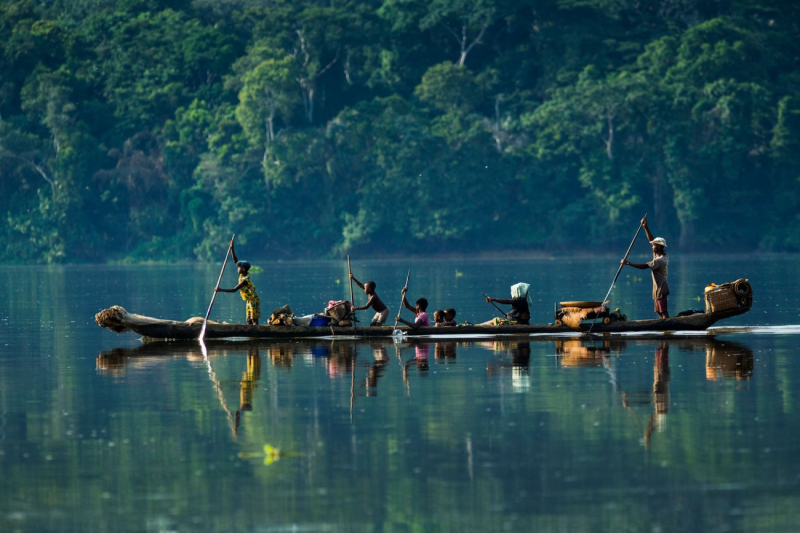Congo

The Congo River is the deepest river in the world, reaching depths of up to 220 meters. It has a length of 2,920 miles, making it Africa's second-longest river. Lake Tanganyika and the Highlands in northern Zambia are its origins. Tributaries of the Congo River go to Zambia, Tanzania, the Central African Republic, and Cameroon. Water snakes, hippos, crocodiles, and tortoises are among the creatures that live in the river basin. The surrounding region is covered in grasslands, which are home to buffaloes, gazelles, and zebras. The Congo River provides for the people that live along its banks. The primary activities along the river basin are fishing and farming. The Congo River is shared by a total of nine countries. Furthermore, the river is well-known for its hydroelectric power output, having over 40 hydroelectric power units located along its length.
The Congo runs northwest from Kisangani, right below the Boyoma Falls, then gradually bends southwest, passing through Mbandaka, joining the Ubangi River, and draining into the Pool Malebo (Stanley Pool). Kinshasa (previously Léopoldville) and Brazzaville lie on opposing banks of the river at the Pool, when the river narrows and descends down a series of cascades in deep gorges (together known as the Livingstone Falls), passing past Matadi and Boma before emptying into the sea at Muanda.
Total Length: 2,920 miles











